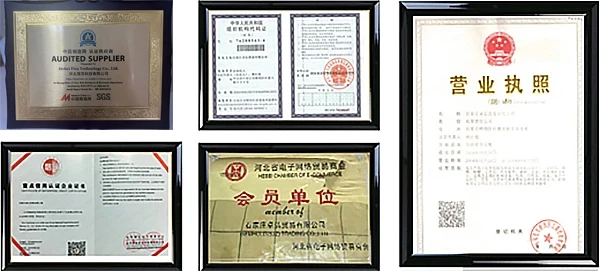



polymerization of polyacrylamide
The Polymerization of Polyacrylamide
Polyacrylamide (PAM) is a versatile polymer that has found extensive applications in numerous fields such as agriculture, water treatment, cosmetics, and pharmaceuticals. Its unique properties, such as high water solubility and the ability to form hydrogels, make it an ideal candidate for a variety of uses. The process of polymerization is key to producing polyacrylamide and understanding its characteristics and behavior.
The Polymerization of Polyacrylamide
The polymerization process is typically carried out in aqueous solutions due to the hydrophilic nature of acrylamide. This aqueous medium plays a crucial role in the reaction, affecting parameters such as temperature, concentration, and pH. Careful control of these parameters is essential, as they influence the molecular weight and the degree of cross-linking within the resulting polyacrylamide. Higher molecular weight polymers tend to exhibit better performance in applications like soil conditioning and water retention.
polymerization of polyacrylamide

One of the significant aspects of polyacrylamide is its ability to be produced in various forms, including nonionic, anionic, and cationic, depending on the intended application. Anionic polyacrylamide, for instance, is frequently used in water treatment processes, where it aids in the aggregation of suspended particles, thus promoting sedimentation. Cationic polyacrylamide, on the other hand, finds applications in fields like textile and paper industries due to its superior flocculation properties.
Moreover, polyacrylamide can be modified post-synthesis to enhance specific characteristics. For example, introducing different co-monomers or cross-linking agents can create hydrogels that have applications in drug delivery systems, wound dressings, and tissue engineering. The ability to tailor polyacrylamide's properties has led to its use in advanced applications, including as a medium for electrophoresis in laboratory settings.
However, the environmental impact of polyacrylamide has raised concerns, particularly regarding its biodegradability. While acrylamide is classified as a potential neurotoxin and a carcinogen, research is ongoing to improve the safety profile of polyacrylamide-based products. Innovative approaches, such as using biodegradable monomers for polymerization, are being explored to mitigate these risks and promote sustainable practices.
In summary, the polymerization of polyacrylamide is a significant process that enables the creation of a polymer with diverse applications. Through free radical polymerization and careful control of reaction conditions, polyacrylamide can be tailored to meet specific needs across various industries. As research progresses, advancements in its synthesis and modifications are likely to enhance its environmental safety and technological versatility, expanding its role in future applications.
-
Why Sodium Persulfate Is Everywhere NowNewsJul.07,2025
-
Why Polyacrylamide Is in High DemandNewsJul.07,2025
-
Understanding Paint Chemicals and Their ApplicationsNewsJul.07,2025
-
Smart Use Of Mining ChemicalsNewsJul.07,2025
-
Practical Uses of Potassium MonopersulfateNewsJul.07,2025
-
Agrochemicals In Real FarmingNewsJul.07,2025
-
Sodium Chlorite Hot UsesNewsJul.01,2025










